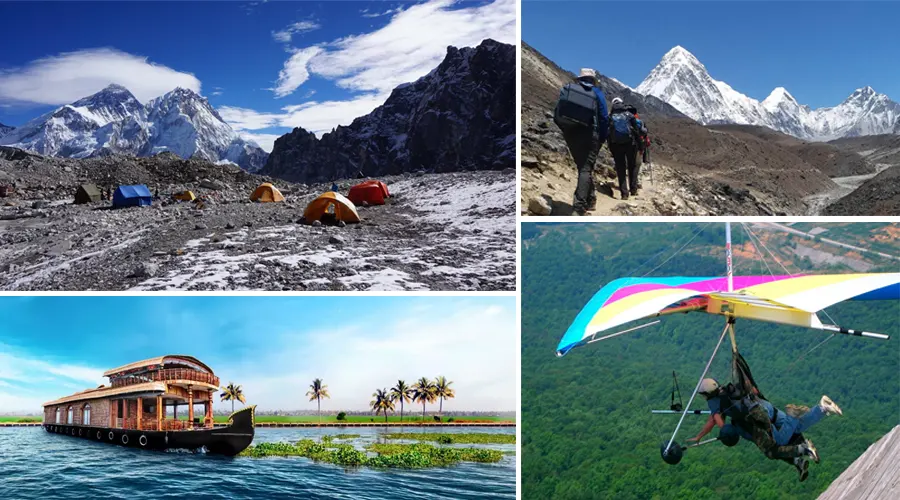Shock Tourism
Shock tourism, sometimes called Extreme tourism, is a travel category strongly characterized by a sense of adventure or even physical danger. Traveling to dangerous places and participating in extremely daring life-threatening activities.
- It can be said that extreme tourism has become a thing for the excessively rich population because of an abundance of money, ego, and the human urge to seek thrills from the most dangerous places.
- Extreme tourism is catching up in popularity in Latin American nations and the countries of earlier Soviet blocks.
- According to UNTWO, adventure and travel have been entwined for centuries as we come across the adventure stories of Marco Polo, Christopher Columbus, and James Cook.
- The creation of The National Geographic Society in 1888 provided an impetus to extreme tourism, gaining popularity among modern travelers.
- To be fond of seeing the unique and unique things of the world by risking life.
- There are many places of wandering in the world, where people go for a walk fearlessly, risking their lives.
- The market for extreme tourism is estimated to be Rs 1 lakh crore by the year 2030.
- Recently, 5 people including 4 billionaires went in a submarine named 'Titan' to see the wreckage of the Titanic ship in the Atlantic Ocean, but the submarine exploded.
- The wreckage of the submarine has been found 1600 feet away from the wreckage of the Titanic ship.
Area of shock / Extreme tourism:
- It is a niche in the tourism industry involving travel to dangerous places mountains, jungles, deserts, caves, and canyons.
- Another developing area of extreme tourism is space tourism.
- It will make human space travel for leisure purposes more accessible. It will include orbital, suborbital, and lunar space tourism. Reportedly, Virgin Galactic and Blue Origin have dabbled with Sub-orbital space tourism.
- Adventure travel is one of the forms of extreme tourism.
- Popular extreme tourism dares would involve risky sports like Bungee jumping, ice diving in the White Sea, observing lion behavior from close quarters in the African savanna within the confines of well-armored shell modules, or diving deep in the blue with the hope to watch the great white shark, the angel of death in action.
Key drivers of extreme tourism:
- Fascinating blockbusters
- Mindset
- Promoting attractive packages
- Destination safety
- Infrastructure
- Quality guides
- Much-needed diversion from the monotony
- Physical fitness
- Element of dare
The dangerous tourist destination of the world:
- Chernobyl Tour Ukraine
- Victoria Falls Zimbabwe
- Mount Hua China
- Death Valley Bolivia
- Green Zone Baghdad Iraq
- Cave of Swallows Mexico
- Pole of Cold Servia
- Titanic Debris Atlantic Ocean
- Lha da Queimada Grande (Snake Island), Brazil
- Lake Natron, Tanzania
- Danakil Desert: African country Ethiopia
- The Cliffs of Moher: Ireland
- Waitomo Glowworm Cave
- Barton Creek Cave, Belize
Extreme tourism is an interesting tourism niche. It is actually a significant source of lifeblood that sustains the tourism industry. It brings about several billions of tourist dollars boosting a country’s annual gross national product. It exposes tourists to challenging depths of oceans, difficult mountainous terrain, dense jungles and extreme climatic conditions.


Comments (0)